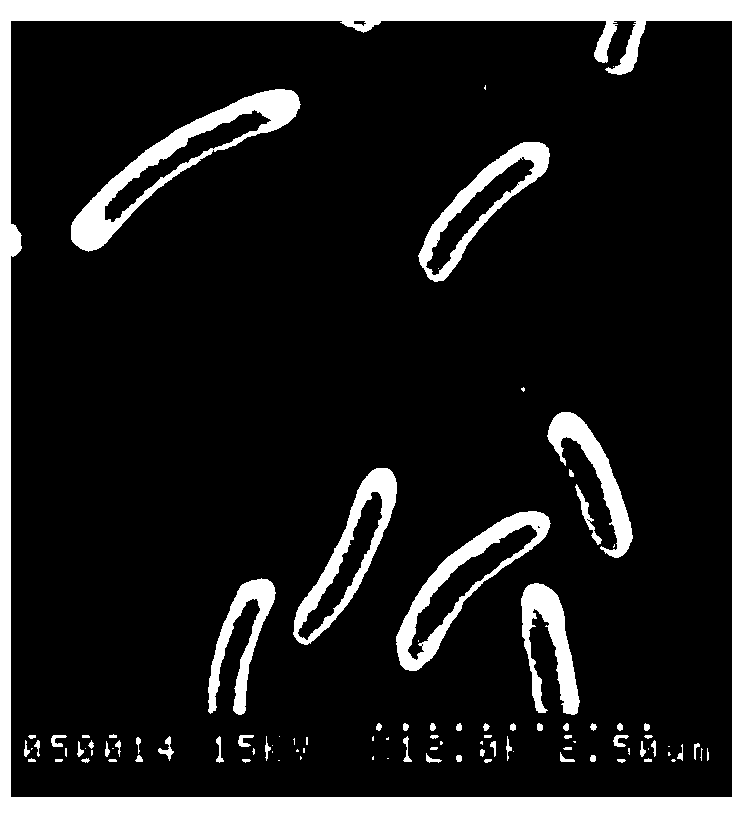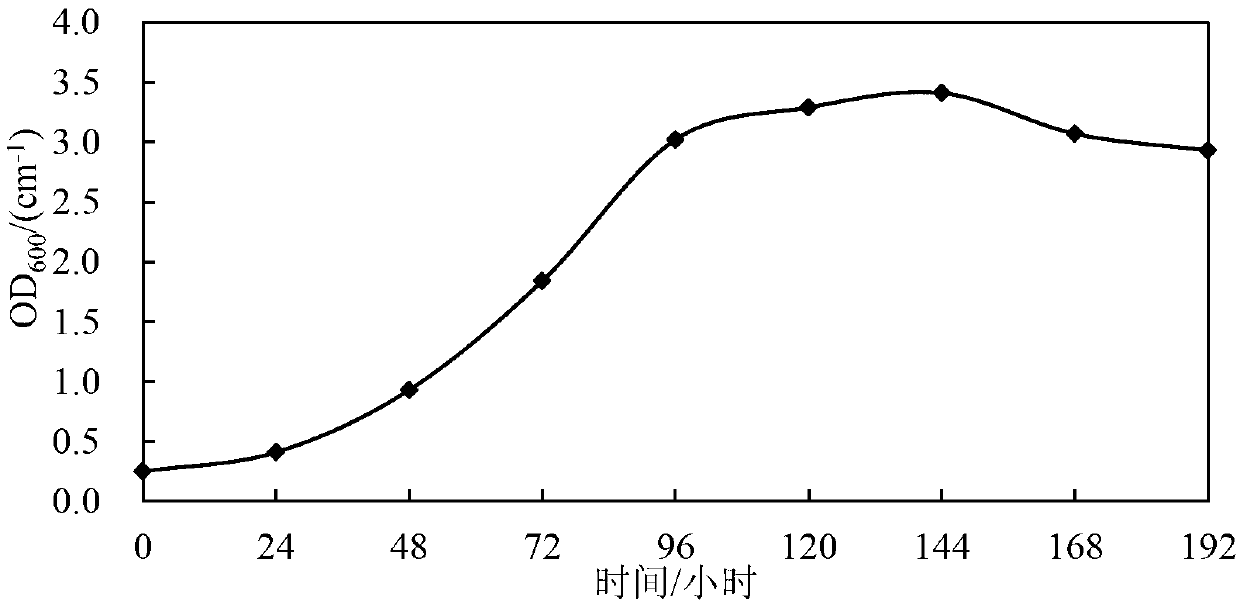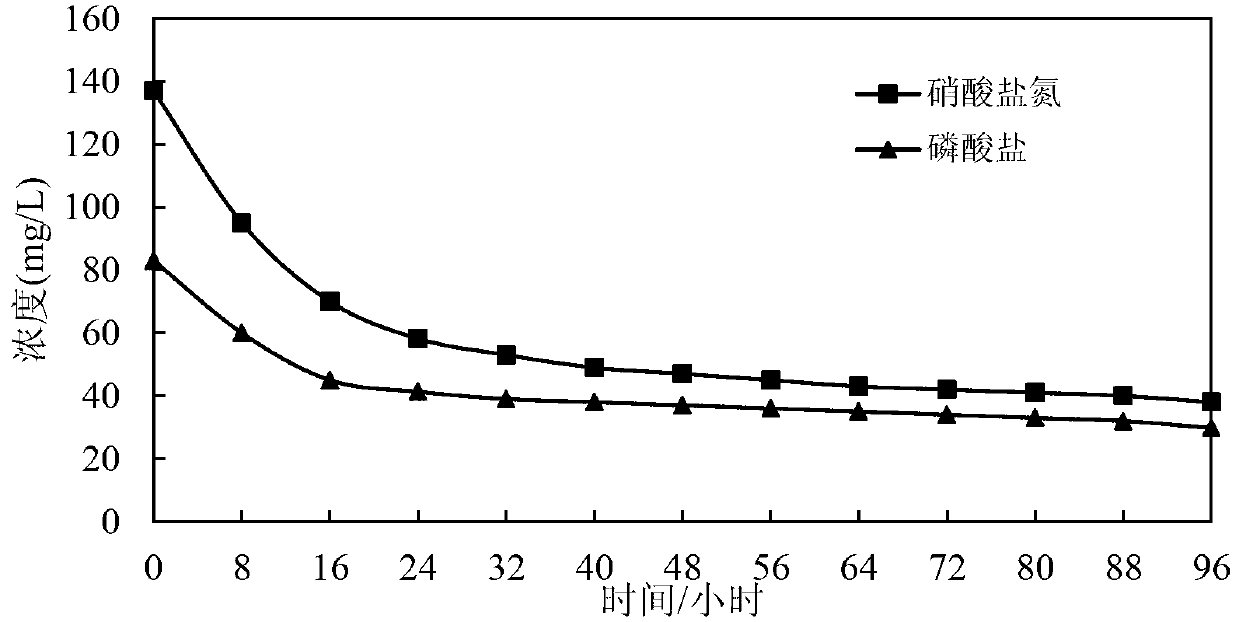Anaerobic denitrification phosphorus-accumulating bacteria strain with denitrification and phosphorous removal effects and application thereof
A denitrifying phosphorus-accumulating bacteria, nitrogen and phosphorus removal technology, applied in the cultivation of anaerobic denitrifying phosphorus-accumulating bacteria and its application field, can solve the problems of no identification method, no convenient and quick cultivation and domestication method, etc., to achieve complete denitrification Air, high phosphorus removal activity, no air pollution effect
- Summary
- Abstract
- Description
- Claims
- Application Information
AI Technical Summary
Problems solved by technology
Method used
Image
Examples
Embodiment 1
[0035] Embodiment 1 Isolation and identification of bacterial strains of the present invention:
[0036] (1) Medium:
[0037] A. Strain isolation, purification, preservation medium ( / L):
[0038]CH 3 COONa, 2g; Peptone, 15g; Yeast extract, 3g; Glucose, 1g; NaCl, 6g; Agar, 12g; KNO 3 , 1.5g; the pH is controlled at 7.0~7.2.
[0039] B. Strain screening, denitrifying medium (DM: Denitrifying Medium) ( / L):
[0040] CH 3 COONa, 2g; KH 2 PO 4 , 0.4g; MgSO 4 ·7H 2 O, 0.6g; CaCl 2 2H 2 O, 0.07g; KNO 3 , 1g; Tris buffer 12mL; trace elements 2mL; pH controlled at 7.0~7.2.
[0041] C. LB medium ( / L):
[0042] Peptone, 10g; yeast extract, 5g; sodium chloride, 10g; pH is controlled at 7.5.
[0043] (2) Isolation and purification of Paenibacillus brilliantis CL-5 strain:
[0044] Separation and purification were carried out by dilution coating method and plate streaking method. First, use a sterile pipette to take 10 mL of the sludge mixture solution at the end of SBR hypox...
Embodiment 2
[0063] Embodiment 2 The cultivation of bacterial strain of the present invention
[0064] (1) Medium used
[0065] A. Strain preservation medium ( / L): peptone, 5g; yeast extract, 3g; glucose, 1g; NaCl, 6g; agar, 12g; KNO 3 , 1.5g; the pH is controlled at 7.0~7.2.
[0066] B. Strain denitrification medium (DM: Denitrifying Medium) ( / L): CH 3 COONa, 2g; KH 2 PO 4 , 0.4g; MgSO 4 ·7H 2 O, 0.6g; CaCl 2 2H 2 O, 0.07g; KNO 3 , 1g; Tris buffer 12mL; trace elements 2mL; pH controlled at 7.0~7.2.
[0067] The above medium was sterilized at 121°C for 20 minutes before use.
[0068] (2) Culture conditions
[0069] Use an inoculation loop to scrape a ring of Paenibacillus splendor CL-5 preserved on the slant of the preservation medium, inoculate it into a 250mL Erlenmeyer flask containing 100mL of sterilized LB medium, and culture it with constant temperature and shaking at 30°C After 12 hours, the seed liquid can be obtained. During the experiment, the seed liquid was inocula...
Embodiment 3
[0070] Example 3 The optimal denitrification conditions of the bacterial strain of the present invention
[0071] Put 100mL of sterilized denitrification medium into a 250mL Erlenmeyer flask, insert the seed bacteria solution according to the inoculation amount of 10% (v / v), and let it stand for cultivation. Its optimal denitrification temperature is between 25-35°C, and the optimum temperature is 30°C. The pH of the strain is between 7 and 8, and it has high-efficiency denitrification activity. The growth cycle of the bacteria is long, entering the logarithmic growth phase after 48h, entering the stable phase after 96h, basically in the stable phase from 96 to 144h, and entering the decline phase after 144h. The nitrogen and phosphorus removal rates of the strain were 57.5% and 50.2% in the first 24 hours, and the nitrogen and phosphorus removal rates in the whole growth cycle were 72.3% and 64.1%, respectively.
PUM
 Login to View More
Login to View More Abstract
Description
Claims
Application Information
 Login to View More
Login to View More - R&D
- Intellectual Property
- Life Sciences
- Materials
- Tech Scout
- Unparalleled Data Quality
- Higher Quality Content
- 60% Fewer Hallucinations
Browse by: Latest US Patents, China's latest patents, Technical Efficacy Thesaurus, Application Domain, Technology Topic, Popular Technical Reports.
© 2025 PatSnap. All rights reserved.Legal|Privacy policy|Modern Slavery Act Transparency Statement|Sitemap|About US| Contact US: help@patsnap.com



